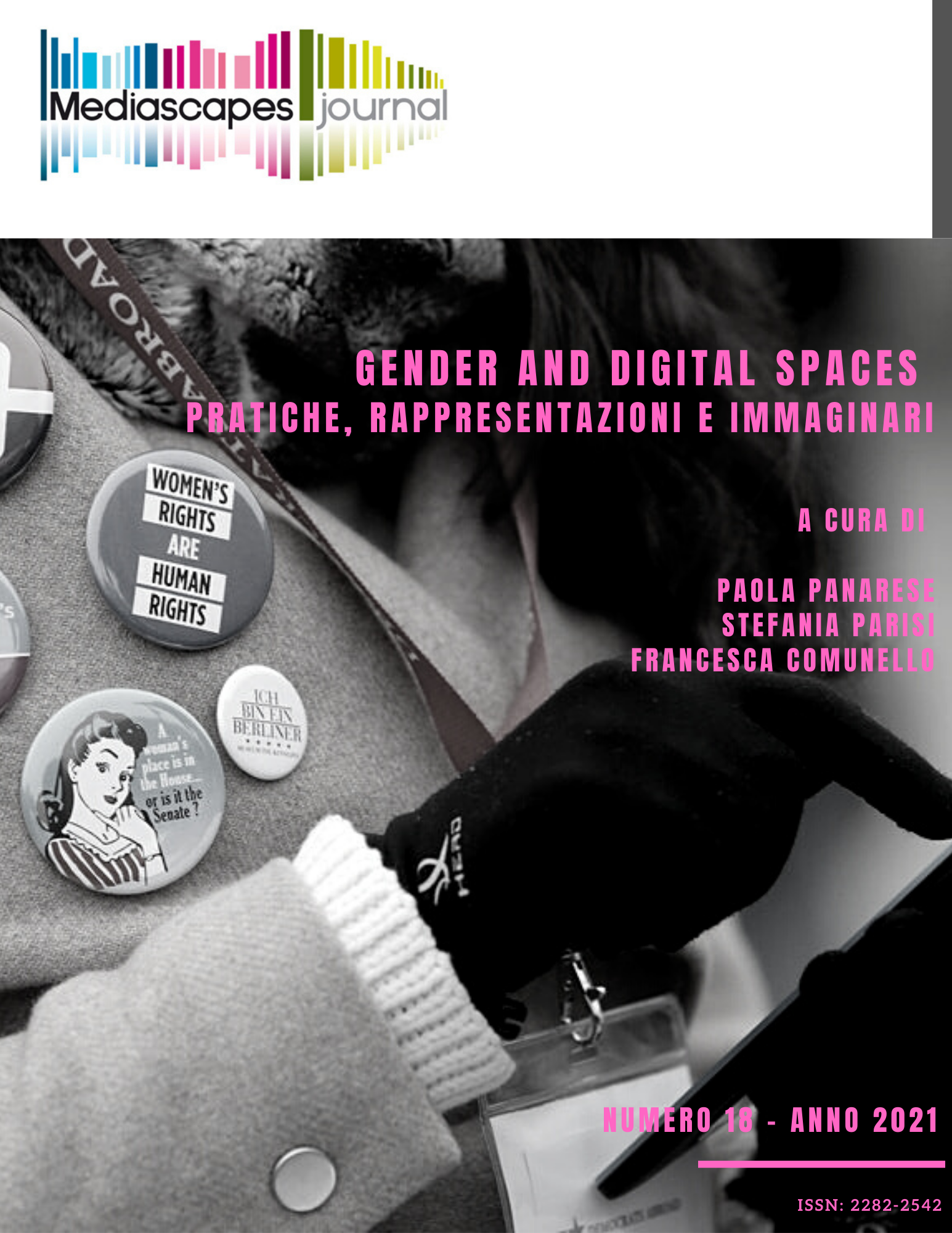Religious masculinities: performing in/visibility on Instagram
Parole chiave:
gender, masculinity, visibility, instagram, digital religionAbstract
Digital media studies on gender and religion have steadily grown in the last decade, showing that digital platforms: (1) contribute to the visibility and voice of marginalized actors, including religious women and LGBT+ people, and offer a place for the expression of the complex nuances of gender performances of religious individuals; (2) are spaces of development of “alternative” forms of religious authority, that challenge, negotiate or complement traditional ones; (3) constitute a safe space for marginalized or minority voices to cope with exclusionary processes they may have suffered within their communities, and to activate forms of re-plausibilization of religion, to make it possible to re-embed oneself in the religious community; (4) open up spaces to unpack, discuss and criticize religious norms and conventions.
This article explores Catholic masculinities by means of digital ethnography, focusing on Instagram posts that use two hashtags: #thosecatholicmen and #dignityusa. The first hashtag performs and renovates traditional Catholicism, praising fatherhood and brotherhood, while the second celebrates LGBTQI Catholics. Both hashtags are related to specific groups; however, focusing on hashtags rather than groups’ accounts allows exploring whether and how the hashtag is appropriated and experienced, broadening its scope beyond its initial launch. Differently to what occurs on Twitter, in fact, Instagram hashtags are used to specify the image content and to connect to ad hoc communities.
Three main elements emerge from the analysis, contributing to the research on gender, digital media, and religion. First, the research shows the differences in the visual representations and expressions of masculinity emerging around the two hashtags – muscular and militant in one case, familiar and non-threatening on the other. Second, it illustrates the differences in the use of Instagram, which in one case is the place to construct and affirm role models, while in the other it offers the chance of claiming the legitimacy of being both homosexual and Catholic. Third, it clarifies the complex mechanisms of visibility and invisibility that are in play.
##submission.downloads##
Pubblicato
Come citare
Fascicolo
Sezione
Licenza

TQuesto lavoro è fornito con la licenza Creative Commons Attribuzione 4.0 Internazionale.
Gli autori che pubblicano su questa rivista accettano le seguenti condizioni:
- Gli autori mantengono i diritti sulla loro opera e cedono alla rivista il diritto di prima pubblicazione dell'opera, contemporaneamente licenziata sotto una Licenza Creative Commons - Attribuzione che permette ad altri di condividere l'opera indicando la paternità intellettuale e la prima pubblicazione su questa rivista.
- Gli autori possono aderire ad altri accordi di licenza non esclusiva per la distribuzione della versione dell'opera pubblicata (es. depositarla in un archivio istituzionale o pubblicarla in una monografia), a patto di indicare che la prima pubblicazione è avvenuta su questa rivista.
- Gli autori possono diffondere la loro opera online (es. in repository istituzionali o nel loro sito web) prima e durante il processo di submission, poiché può portare a scambi produttivi e aumentare le citazioni dell'opera pubblicata (Vedi The Effect of Open Access).


